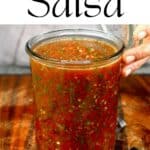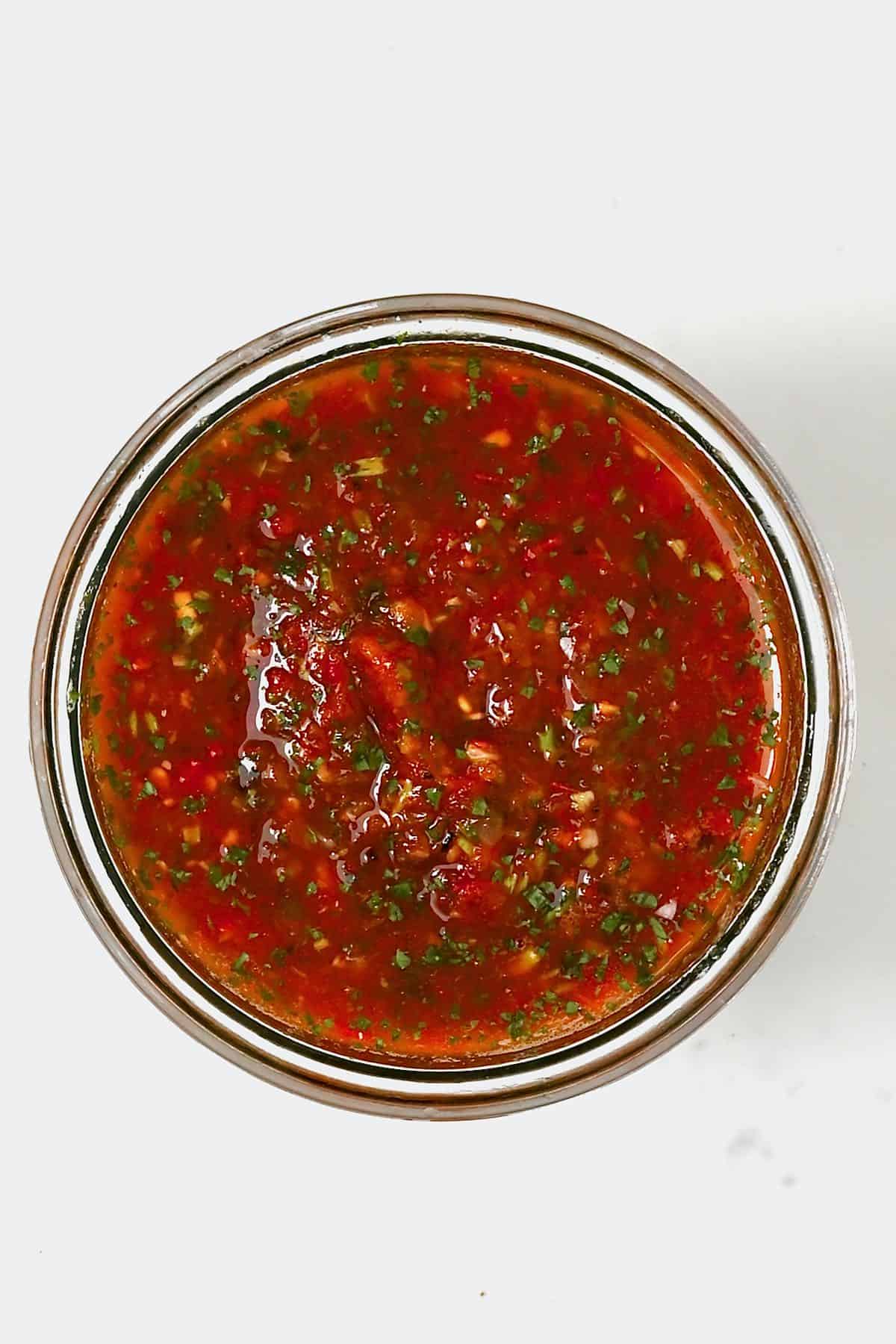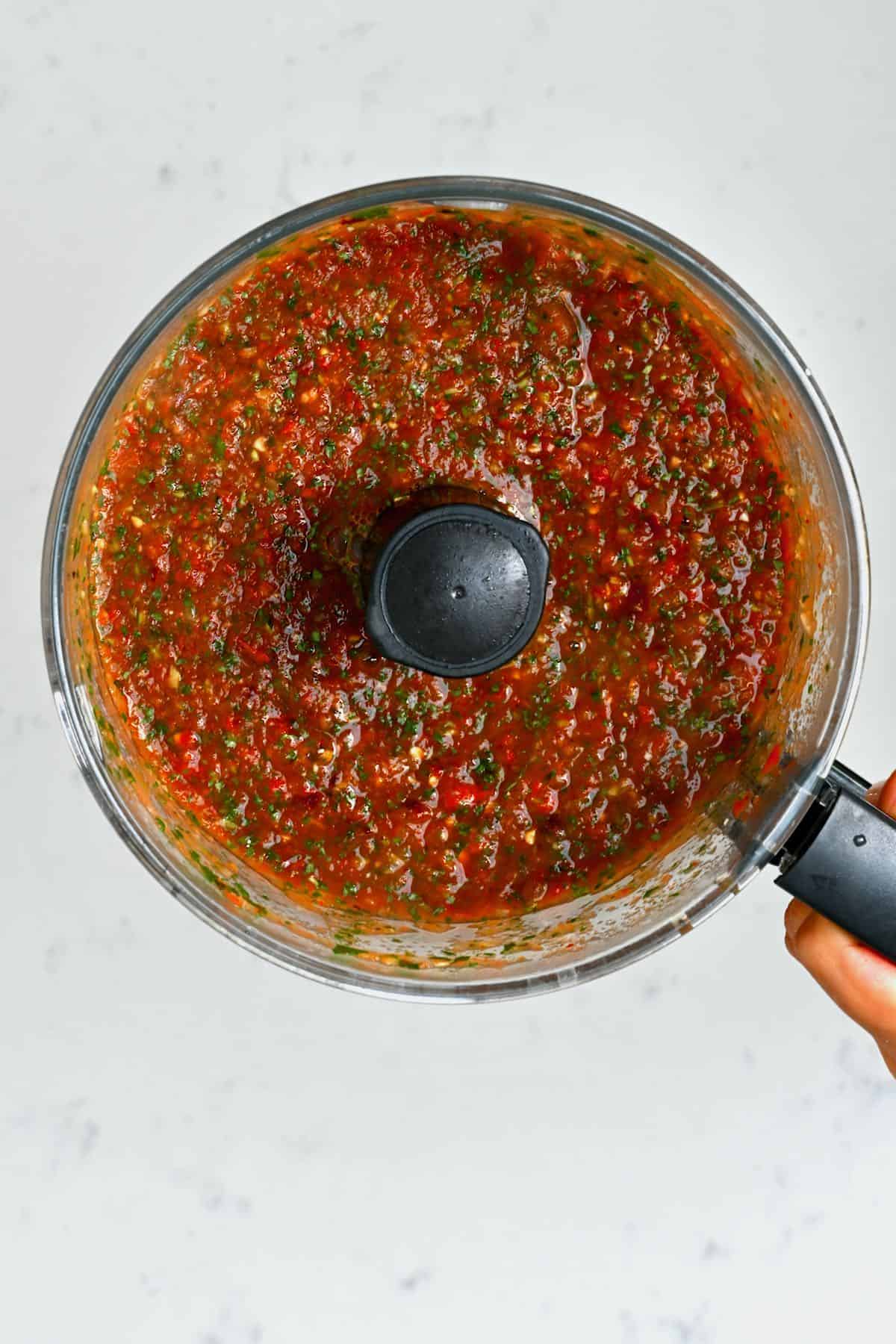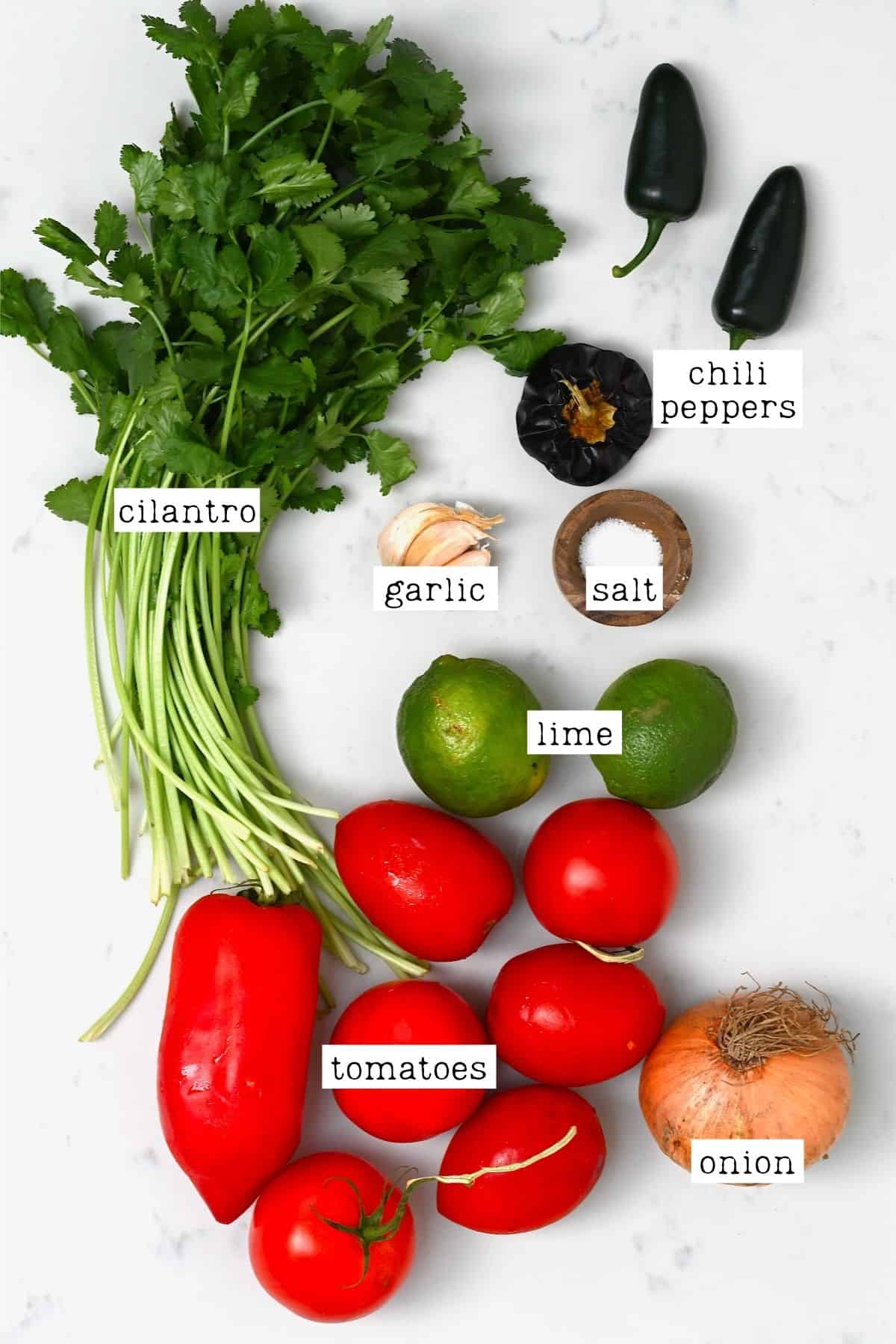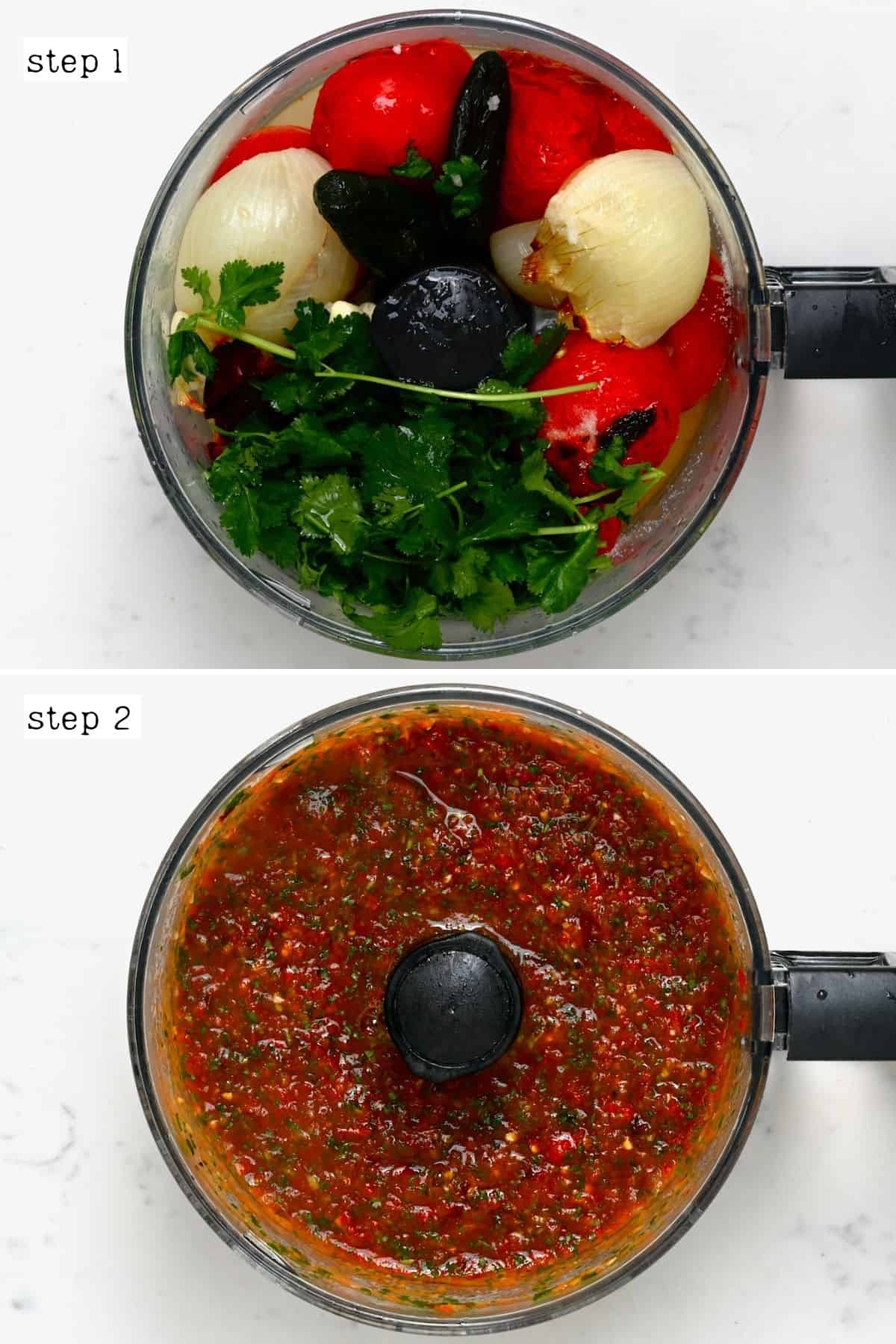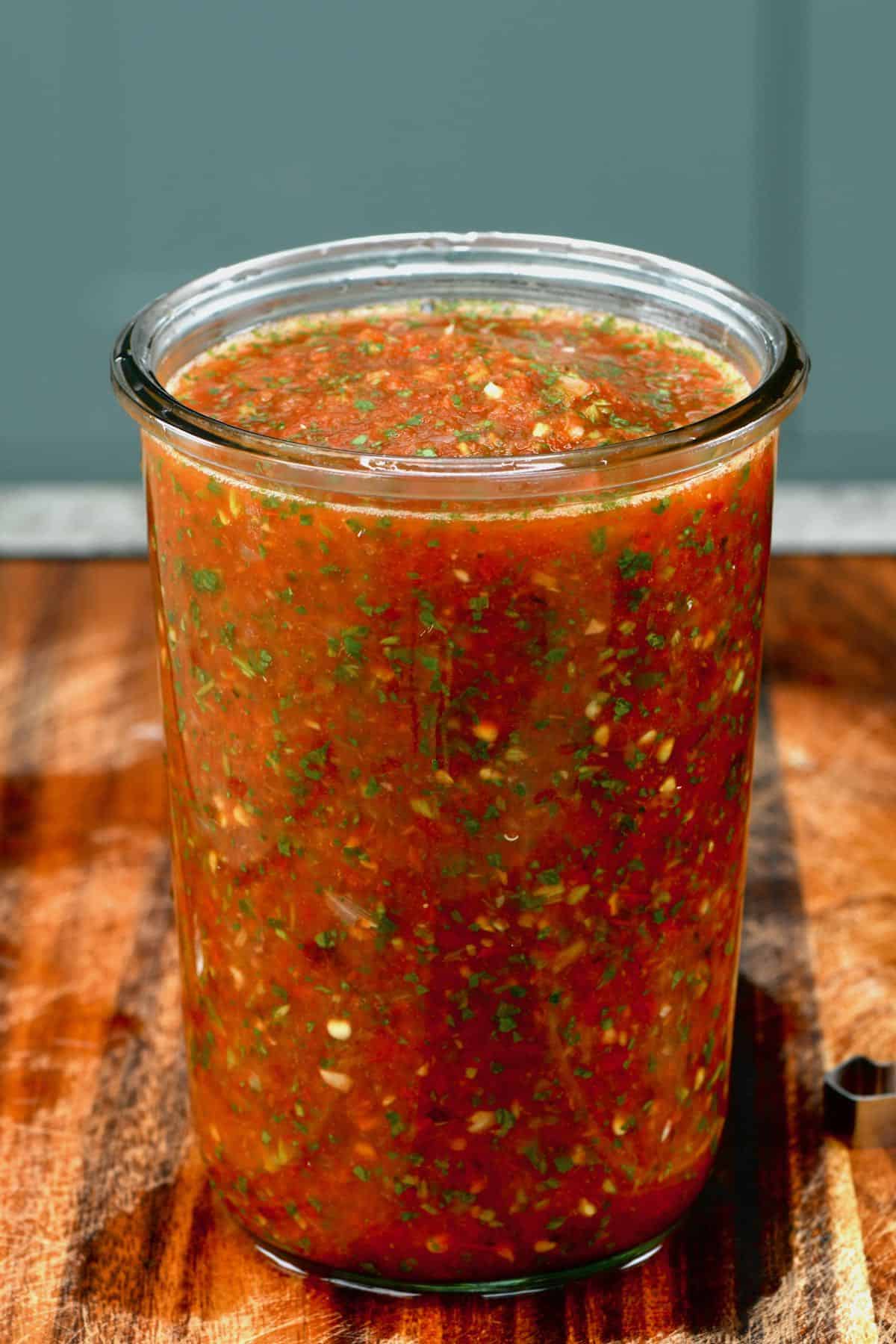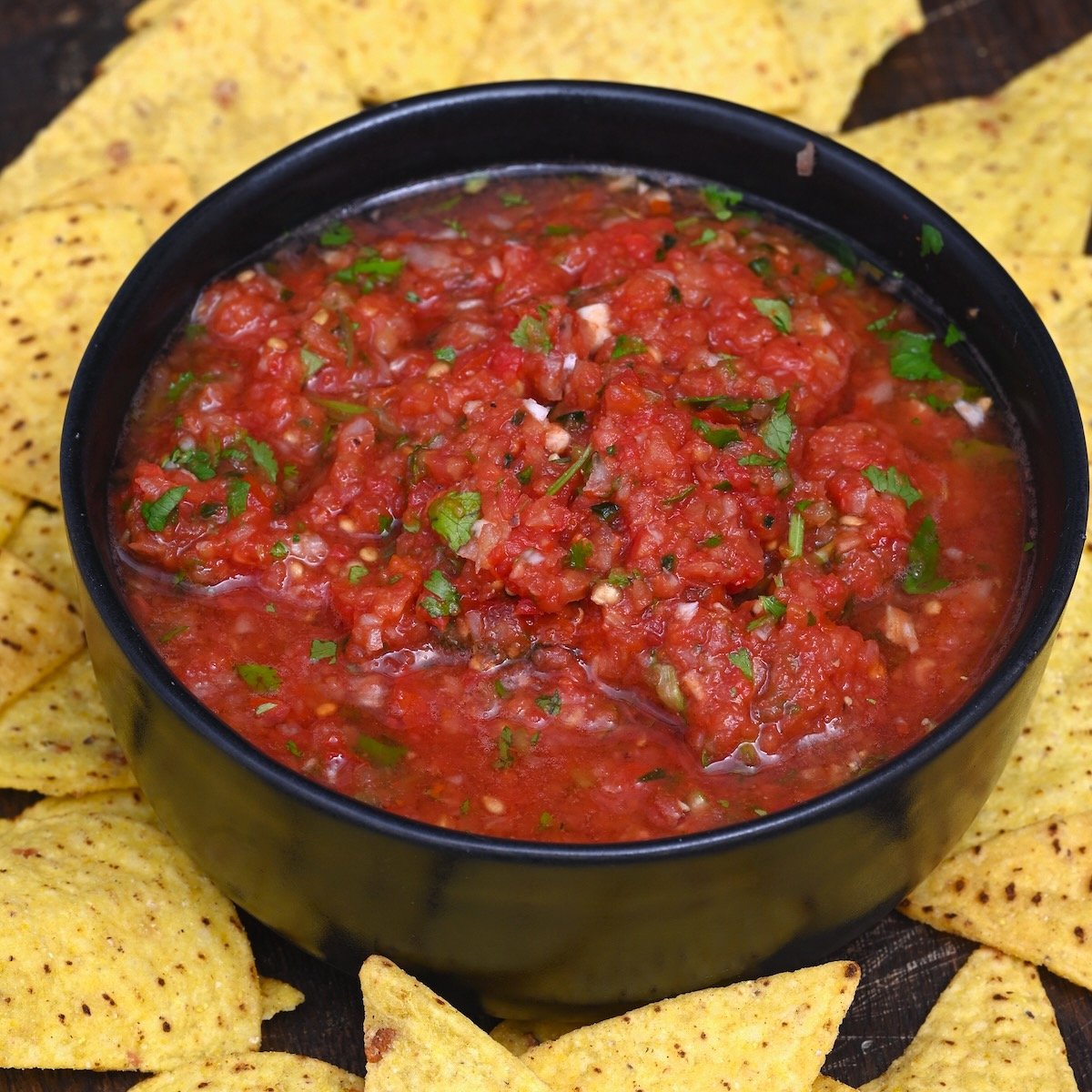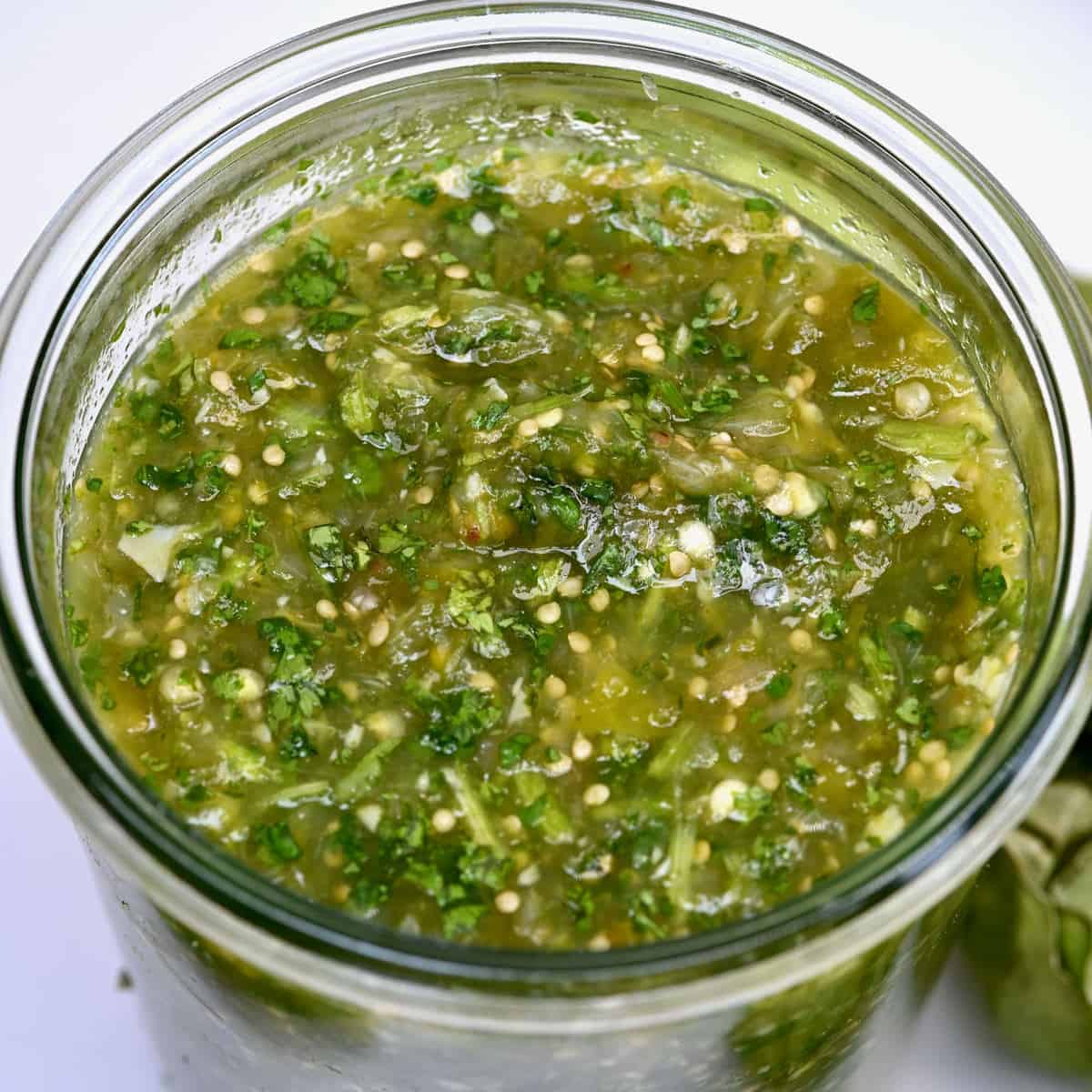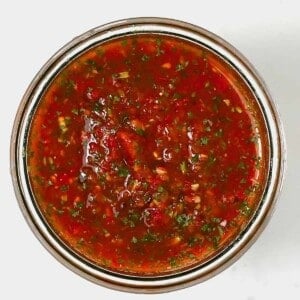I always try to make the most of the fresh, in-season ingredients with fresh salads and salsa recipes. And once I realized the potential of roasted tomato salsa, I had to try this recipe. This fire-roasted salsa recipe may be my favorite now! As much as I love fresh salsa, this oven roasted salsa has added depth of flavor (and smokiness) that is just impossible to replicate in fresh (and supermarket) salsa. Once you’ve tried this restaurant-style fire-roasted tomato salsa, there’s no going back!
What is roasted tomato salsa
Roasted tomato salsa is made by roasting tomatoes before they are processed. The roasting process adds a smoky, slightly charred flavor. The smoky flavor of the best roasted salsa will have you coming back for me.
What’s the difference between tomato salsa and pico de gallo
Homeamde pico de gallo, also known as salsa fresca, is made by finely chopping tomatoes, onions, cilantro, and lime juice. It is typically not cooked and has a fresher, more raw flavor. So, the main difference between roasted red salsa and pico de gallo is the cooking process. Plus, the two salsas have different textures. Roasted tomato salsa has a smoother texture while pico de gallo has a chunkier texture.
What’s in tomato salsa
For this homemade salsa recipe, you need:
Tomatoes: Use the ripest, in-season tomatoes that you can find. I like to use Roma tomatoes, though vine-ripened tomatoes also work exceptionally well. You can even use smaller cherry tomatoes. Use tomatoes that aren’t too seedy. Chilies: I used a combination of green jalapeño peppers and a dried chili called “Noras dulce Seca”. You can also use serrano peppers or poblano peppers. Adjust the amount and variety of chili based on how hot you want the roasted tomato salsa to be. You can also omit the dried chile entirely. Onion: Use white onion, if possible, though yellow onion would also work. Garlic: Adjust the amount to personal taste. Cilantro: If you hate fresh cilantro, you could use parsley, though it obviously won’t taste the same. Salt: Adjust the amount to personal preference but don’t omit. Lime: This is technically optional, as it can cause the salsa to become bitter over time. However, I like the addition.
How to make tomato salsa
How to make salsa from scratch requires just a few simple steps.
Prepare the chili
If you’re using a dried chili, first, you’ll need to rehydrate it. Place it in hot water (or vegetable stock) for about 30 minutes. The time will vary based on the size of the chili.
How to roast tomatoes for salsa
Meanwhile, wash all the fresh ingredients. Then it’s time to “fire roast” them. There are three ways to go about roasting tomatoes for salsa:
Grill: during the summer months, you can easily char the ingredients on the grill. Grill for several minutes (about 3-5 minutes), then flip over and repeat until evenly charred. Over flame: similar to using a grill, you can cook the ingredients over an open flame (or charcoal BBQ) until well blackened on each side. Broiler: spread the ingredients across a baking sheet and spray lightly with a bit of oil. Then, cook under the broiler, occasionally turning, until charred, beginning to shrivel with blackened spots (usually 10-15 minutes).
The small chilies will take less time, so remove the various ingredients from the pan as needed. You could also, optionally, peel the onion before roasting and chop it in half or quarters for more tender, charred results. Allow the ingredients to cool for a few minutes. Then remove anything you won’t be adding to the roasted salsa; the onion peel, tomato stems, chili stems, seeds, etc. All the roasted ingredients should be tender and easy to handle.
Process the roasted tomato salsa
For a chunkier, traditional roasted salsa, you can use a molcajete (mortar and pestle) to grind the cooked ingredients into slightly chunky salsa. To do so, I recommend starting with salt and garlic. Then add the onions (finely chopped after roasting), then the chilies, tomatoes (with the seasonings), and finally the roughly chopped herbs. Alternatively, use a small food processor (or blender), as I did. Simply add all the salsa ingredients to the processor (including the lime, salt, and garlic). Blend to your desired texture – though a little chunky is traditional.
How long will tomato salsa last in the refrigerator
Store the leftover roasted tomato salsa in a sealed container in the refrigerator for 5-7 days. This cooked tomato salsa recipe tastes even better on day two, as well. It’s perfect as a make-ahead dish for parties, potlucks, and game nights!
How to can tomato salsa
While it is possible, this recipe wasn’t designed with that in mind. To can this roasted tomato salsa, you need to adjust the pH. The easiest way is by adding citric acid (though lime juice or vinegar – like apple cider vinegar). You can then water-bath can the salsa for months of storage. I recommend you check the USDA guidelines for the best method.
How to Serve Tomato Salsa
This roasted salsa is a truly versatile condiment and can be served with all sorts of dishes.
Serve with tacos, burritos, quesadillas, tostadas, nachos. Alongside corn tortilla chips or plantain chips, for dipping. Use as a marinade or sauce to serve over fish. Use as a marinade/sauce for carne asada. Spoon over scrambled eggs or baked eggs. Use over huevos rancheros in place of salsa roja. Spoon over roasted vegetable sides. Serve with pasta. Enjoy with roasted corn on the cob.
More quick salsa recipes
Quick & Easy Homemade Salsa Mango Avocado Salsa Salsa Verde Salsa Roja Salsa Fresca
If you try this homemade roasted salsa recipe, let me know how it goes in the comments below. I’d appreciate a recipe card rating and would love to see your recipe recreations – tag me on Instagram @Alphafoodie!
